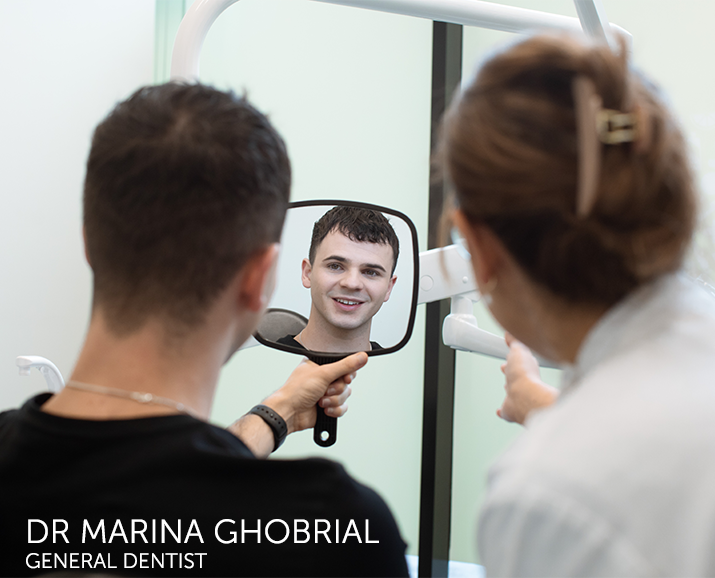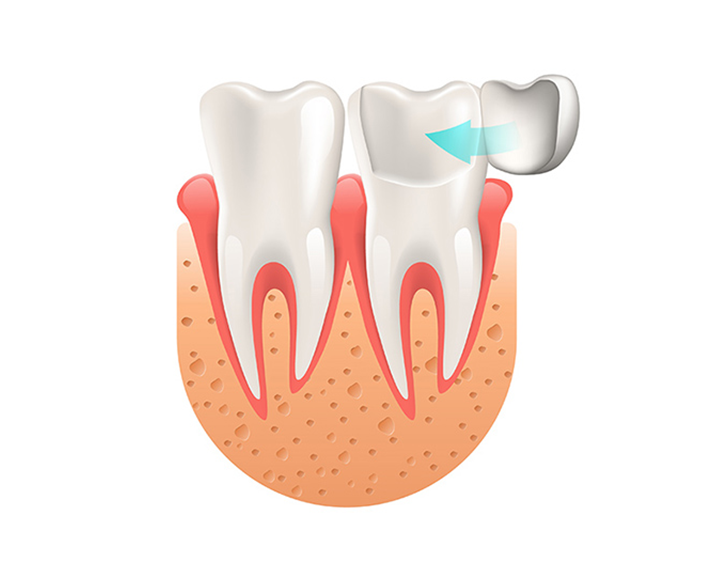Dental veneers are custom-made shells applied to natural teeth for the dual purpose of adding strength and beauty.
Dental veneers are a cosmetic solution to a variety of scenarios, including:
- Aged veneers needing replacement
- Spaces between teeth
- Broken, crooked or badly chipped or worn teeth
- Permanently stained or discoloured teeth
Different types of Veneers
There are two different types: composite and porcelain. The key difference between these is the material used. The former are made from composite resin, a white filling material; the latter from porcelain, which is a hardened translucent ceramic.
The advantages of composite veneers are they require very little preparation of the underlying natural teeth, provide immediate results in a single treatment session and are approximately half the price of their porcelain counterparts. Porcelain, on the other hand, is stronger and longer lasting than composite resin, requires less maintenance and offers superior aesthetics — generally it will blend seamlessly with the surrounding natural teeth.
Composite Veneers

Composite veneers are a “conservative” treatment – very little of the underlying natural tooth is sacrificed in the treatment process.
Composite veneers provide immediate results and are generally half the cost of porcelain.
Learn more about Composite VeneersPorcelain Veneers

Porcelain is a much stronger, longer lasting material than composite resin and thus requires less ongoing maintenance; teeth with veneers should simply be cared for in much the same way as other teeth.
Learn more about Porcelain VeneersFrequently Asked Questions
Your choice may be determined by your preferred treatment process, your short-term budget and your desired outcome.
The treatment process for composite resin veneers is one of direct bonding to your teeth, also known as dental bonding. (This is the same method that’s used to place a composite filling.) One of the advantages of composite veneers is that they require only one visit to the dentist. Another benefit is that composite is a cheaper option than porcelain in the shorter term.
However, a disadvantage of composite veneers is they are not as strong as the alternative – being slightly porous, they must be maintained more regularly than porcelain and are rarely permanent. They can also lose their lustre after a while, so they need to be polished; and they can discolour, needing to be replaced. These ongoing treatments add to the cost factor in the longer term.
The advantages of porcelain veneers is that they are more natural looking, are more durable and need less maintenance than composite as they don’t change colour or lose their shine. This makes them cost effective in the long term.
On the other hand, porcelain veneers, as mentioned, are manufactured either chair-side or in a laboratory after your initial consultation, and are then placed by your dentist on a second visit.
Your dental practitioner will advise you of any special care requirements for your new restorations, as well as any follow-up appointments that may be necessary to check your progress.
Keeping up a good dental hygiene routine, including brushing and flossing, combined with a scale and clean with your dental hygienist is very important. While the porcelain (or composite) that makes up your veneers cannot decay, the underlying teeth still can, and the teeth are vulnerable wherever they are exposed (at the back and sometimes the sides) and also where they connect with the veneers themselves. One of the benefits of dental veneers is they can protect the underlying teeth against decay. Providing you brush your teeth with fluoride toothpaste twice a day and use fluoride mouthwash regularly, dental veneers have been shown to resist decay.
Composite veneers require just one visit. First your dentist assesses your tooth to check that there is enough natural tooth to accept the restoration. The underlying tooth is prepared, if necessary, so the veneer will adhere, though composite veneers require very little of your tooth to be sacrificed in the treatment process. Next white filling material is applied in layers and then hardened with a ‘Bluephase’ LED light. This process is then repeated until the desired length, width and shade are achieved.
For porcelain veneers your dentist assesses your tooth to check that there is enough natural tooth to accept the restoration. Next, your tooth is prepared by shaving back a thin layer to provide a surface for the porcelain to adhere to. Then, a temporary veneer is prepared and placed over the tooth while your porcelain veneer is created. About two weeks later your new porcelain veneer will replace the temporary one, and after being tried to check that it is a perfect fit, it will be permanently attached.
It’s important to understand that the cost of any dental treatment can vary between patients, depending on the complexity of the procedure, and who performs the treatment. No two mouths are the same, and so dentists will not necessarily be able to give you an exact cost until they have thoroughly examined your teeth.
Although veneers might be considered expensive, with porcelain veneers costing more than composite veneers, patients are usually very satisfied with the results and admit that the benefits, such as improved aesthetics and (in the case of porcelain) a stronger material far outweigh the cost. There are a few different costs involved with veneers, from the X-rays to the process of bonding the veneers and the cost of the material itself.

